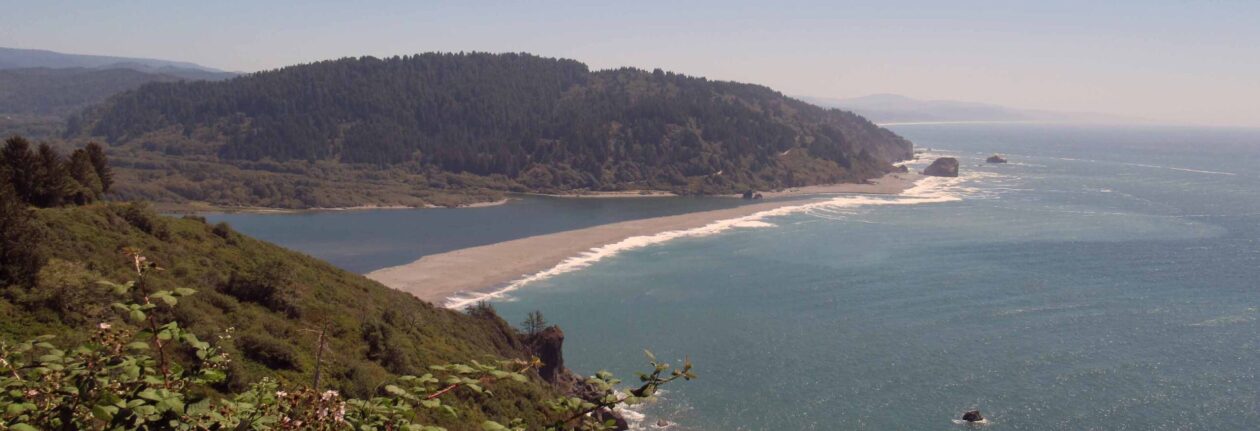Vientiane, Laos
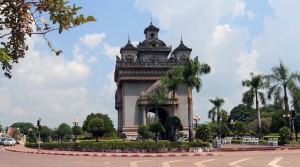
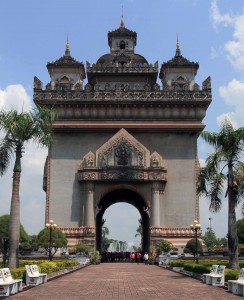
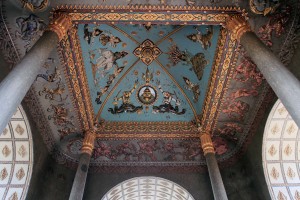
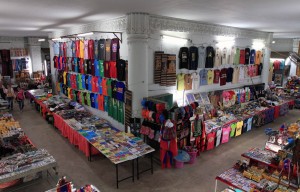
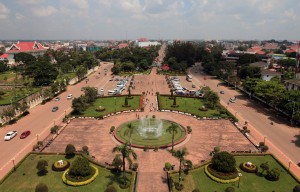
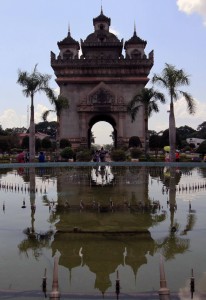
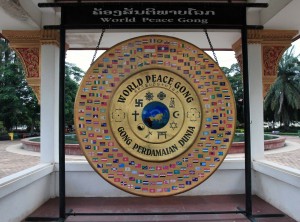
I woke up today and got ready to explore the rest of Vientianne. I left the hotel at about 11:00, and immediately set out to see Patuxai (which means “Victory Gate”); it is a war monument that was built between 1957 and 1968, dedicated to those that fought for independence from France; also, the monument was built using funds and cement from the United States, which were originally intended to build a new airport; the monumental gate is also built with entrance-ways facing in the four cardinal directions and it has five towers on top that represent the five principles of coexistence among nations of the world. After walking to the monument and admiring the scale and design from the outside, I bought my entrance ticket to the top; I climbed several flights of stairs and to my astonishment . . . the inside rooms of the monument were filled with shops selling every type of Lao souvenir, not exactly the most respectful use of a war monument; I continued on, passing shop after shop before I reached the topmost level; then after walking around the top levels, looking at the views of Vientiane at this height, I went back down and continued on through the park, passing by a water fountain and (at the end of the park) a World Peace Gong, given to Laos by Indonesia – I couldn’t help but think that the United Nations should use a gong like this inside the General Assembly Hall; every time a nation is deemed to be acting in a manner that threatens world peace, the gong should be struck to bring attention to the belligerent nation’s actions; striking of the gong shall be decided on by a panel of three judges made up of Jamie Farr, Paul Williams, and Rip Taylor . . . that was the joke.
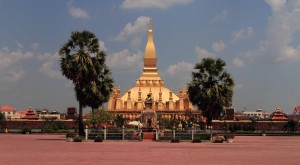
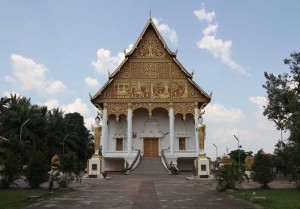
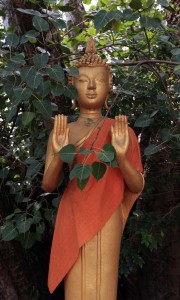
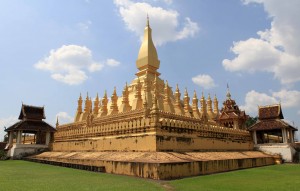
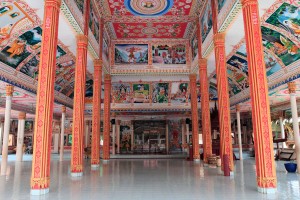
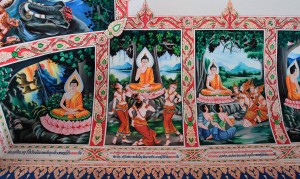
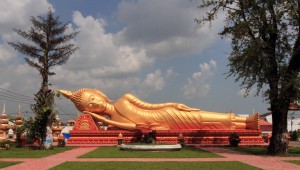
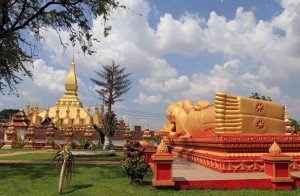
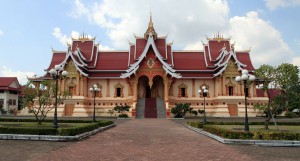
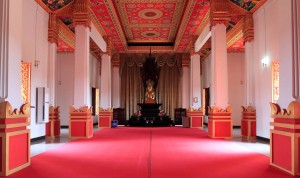
After leaving Patuxai, I walked northeast to Pha That Luang, a giant gold-covered Buddhist stupa, and the national symbol of Laos. The stupa was originally built in 1566 by King Setthathirat and in 1828 it was destroyed by the invading Siamese; it was then reconstructed by the French in 1900, only to be destroyed again during the Franco-Thai War; after World War II, it was finally reconstructed for “reals” this time. As I approached this magnificent stupa, I passed through a parade ground right before it that was made of pavement and had large stands in the distance for the governmental leaders to view from; currently, there were motorbikes racing across the parade field and they were also driving all around the stupa; I was surprised to see such behavior in an esteemed location and could not help but think that this government must resemble the one portrayed in ‘Idiocracy’ (a sort of, “don’t care”, “whatever” attitude that allows the dregs of society to do what they want – Note: after the communist takeover, ten percent of the population fled, mostly intellectuals and businessmen, so the comparison to ‘Idiocracy’ isn’t too far removed from the reality . . . and that concludes my anti-communist rant for today, join me tomorrow for some more when I’ll go in to doctorate-level detail as to why Ernesto “Che” Guevara was a confused, misguided, walking contradiction with penis envy). Anyway, I walked around the stupa and looked around at a nearby temple and Bodhi tree (brought from India) on the west side of the stupa before entering in to the stupa complex (it had just opened again at 13:00, after lunch); I then walked around the golden-structure, admiring the beauty of it while also looking at the old, withered statues decorating the surrounding halls. After walking around the stupa, I then walked to the temple complex toward its east; I walked inside the open lecture hall, which was adorned with many colorful paintings, and around to the north side where there was a giant reclining Buddha. I then walked to a large hall southwest of the stupa (adjacent to the parade stands), which was open to visitors; inside, there was a main hall room with a Buddha statue and a gong. After visiting Pha That Luang and all the surrounding structures, I then walked back to the city center.
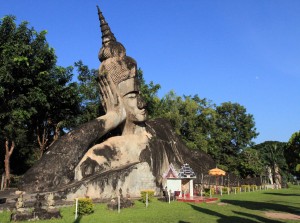
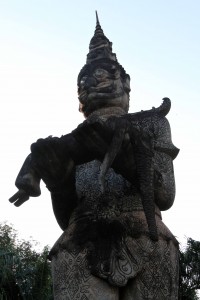
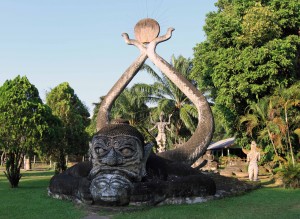
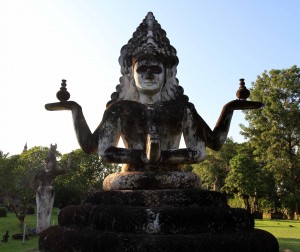
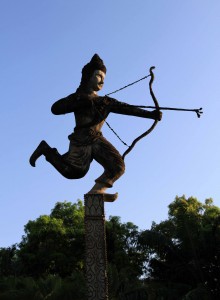
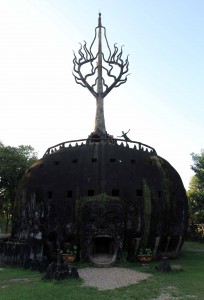
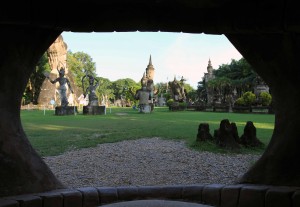
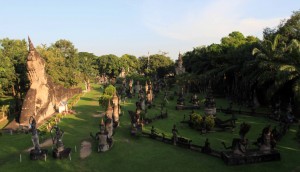
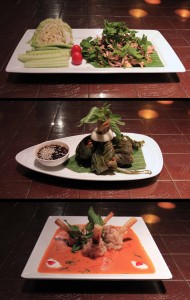
I passed through the “Morning Market” building and then walked to the Central Bus Station; from there, I took the “Number Fourteen” bus to Friendship Bridge (the bridge between Laos and Thailand); at the bridge, I hired a tuk-tuk to take me to Buddha Park (they actually had their prices displayed on a board, which were not too far off from the prices I was given at my hotel’s reception desk, so I went with it); by tuk-tuk, I then traveled through very dusty roads to Buddha Park, a park which contains over two hundred Buddhist and Hindu statues; the park was started in 1958 and all the statues are made to look like they are older than that, but the reality is that they are all from the twentieth-century; the most prominent structure in the park (besides a giant reclining Buddha) is a large pumpkin with three levels (resembling Hell, Earth, and Heaven) that reminded me of the giant peach in ‘James and the Giant Peach’. I walked around the park, climbing up a tall pyramid monument that had thousands of ants living near the top, and walking its grounds, looking at all the bizarre and unique Buddhist and Hindu sculptures, many designs I had never encountered before; I then entered inside the giant pumpkin (through a demon’s mouth), from the first level, I found the steps up to the second, I then walked in to the inner chamber and took the steps from there up through the next two levels; at the top, I crawled through the mouth of another mythical creature, coming out on top of the pumpkin, where I was given a grand view of the entire park. After spending some time on top of the reinforced concrete pumpkin, I went back down through the different levels utilizing the stairs near its outer side(which were easier to see and safer) and I then came back out through the demon mouth. I then walked back to the tuk-tuk and went back to Friendship Bridge with two locals who needed a ride. We made it back to the border bridge and I immediately entered the bus (“Number Fourteen”) that was there; I then traveled back to the city center of Vientiane. Once at the Central Bus Station, I walked toward my hotel, and decided to eat dinner at a nearby restaurant, which surrounds a water fountain; I had a Lao-style spicy stir-fried minced duck, deep-fried stuffed chicken wrapped in Pandanus leaf, shrimp mousse with sugarcane in red curry, and one liter of Lao beer (it was a fantastically presented meal; beautiful to behold); after that amazing meal, I then walked to the Full Moon Cafe to inquire about taking a cooking class tomorrow, unfortunately they did not have any classes scheduled for tomorrow, so I was “shit out of luck” (this means I have absolutely nothing scheduled for tomorrow and not much money left either; there fore I’ll be spending the rest of my time in this city in my room); I then walked through the night market back to my hotel room, where I relaxed for the night before falling asleep.
